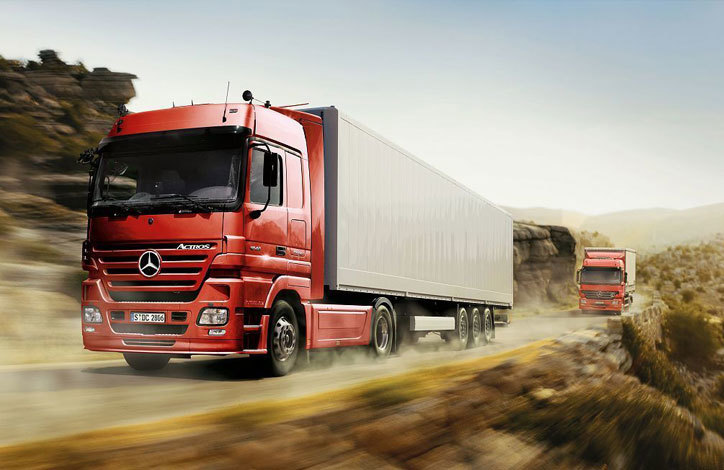Tire abnormal wear, what is the reason and how to solve it
2019-01-05

Tire wear is mainly caused by the friction force generated by the sliding between the tire and the ground. The driving conditions of the car such as starting, turning and braking are constantly changing. If the turning speed is too fast, the starting is too fast, and the braking is too strong, the tires will wear quickly. In addition, tire wear is also related to the driving speed of the car. The faster the driving speed, the more serious the tire wear. The quality of the road also directly affects the friction between the tire and the ground. When the road is poor, the tire and the ground slip more. The wear accelerates. The tire wear caused by the above conditions is basically uniform and belongs to normal wear. If the tire is used improperly or the front wheel is not positioned correctly, it will produce faulty abnormal wear. The common abnormal wear is as follows:
1. Early wear of the central part of the tire
The main reason is that the amount of inflation is too large. Properly increasing the inflation of the tire can reduce the rolling resistance of the tire and save fuel. However, when the amount of inflation is too large, it will not only affect the damping performance of the tire, but also cause the tire to deform too much and reduce the contact area with the ground. Normal wear can only be borne by the central part of the tread, resulting in early wear. If you choose a wide tire on a narrow rim, it will also cause early wear in the central part.
2. Excessive wear on both sides of the tire
The main reason is insufficient inflation, or long-term overload driving. When the amount of inflation is small or the load is heavy, the contact surface between the tire and the ground is large, so that both sides of the tire contact the ground to participate in work and form early wear.
3. Excessive wear on one side of the tire
The main reason is the misalignment of the front wheels. When the camber angle of the front wheel is too large, the outer edge of the tire will form early wear, and when the camber angle is too small or not, the inner edge of the tire will form early wear.
4. The tire tread appears serrated wear
The main reason is that the front wheel positioning is improperly adjusted or the front suspension system position is abnormal, the ball head is loose, etc., which cause the normally rolling wheels to slip or the wheel positioning is constantly changing during driving, resulting in tire serrated wear.
5. Large wear of individual tires
Abnormal suspension system of individual wheels, bending of supports or imbalance of individual wheels will cause early wear of individual tires. After this situation occurs, check the positioning of the severely worn wheels, the working conditions of the independent suspension springs and shock absorbers, and shorten the wheel rotation cycle.
6. The tire has alopecia areata wear
The cause of severe alopecia areata wear in individual parts of the tire is poor tire balance. When the unbalanced wheel rotates at a high speed, the individual parts are subjected to heavy force and wear is accelerated. At the same time, the steering is blocked and the handling performance deteriorates. If you find a slight jitter in a certain speed direction during driving, you should balance the wheels to prevent alopecia areata wear.
In order to avoid the occurrence of the above-mentioned abnormal wear, the following matters should be paid attention:
1. Pay attention to tire pressure
Air pressure is the life gate of a tire, too high or too low will shorten its service life. If the air pressure is too low, the deformation of the carcass will increase, the sidewall will be prone to cracks, and at the same time produce flexing motion, resulting in excessive heat generation, prompting rubber aging, ply fatigue, and cord breakage. If the air pressure is too low, it will increase the tire contact area and accelerate the shoulder wear. If the air pressure is too high, the tire cord will be stretched and deformed excessively, and the elasticity of the carcass will decrease, which will increase the load on the car during driving. In case of impact, internal cracks and bursts will occur. At the same time, too high air pressure will accelerate the tire crown Wear and reduce rolling resistance.
2. Regularly check the front wheel alignment
The front wheel positioning has a greater impact on the service life of the tires, especially the toe and camber of the front wheels. The camber of the front wheel will mainly accelerate the wear of the shoulder, that is, eccentric wear; the toe of the front wheel is too small and too large, mainly to accelerate the wear of the inner and outer sides of the tire.
3, pay attention to driving mode
In addition to handling the situation when driving, it is necessary to choose the road to avoid sharp stones, glass, metal and other objects that may puncture and scratch the tires, and avoid the adhesion and corrosion of chemical spilled substances to the tires. When driving on a road with a large degree of camber, try to drive in the center to reduce the increase in tire load on one side and uneven tire wear. Under normal circumstances, 20% overload will reduce tire life by 30%, and 40% overload will reduce tire life by 50%; in addition, rapid turns, emergency braking, high-speed start and rapid acceleration will all have an impact on tire damage. To be avoided.

 400-8888-367
400-8888-367